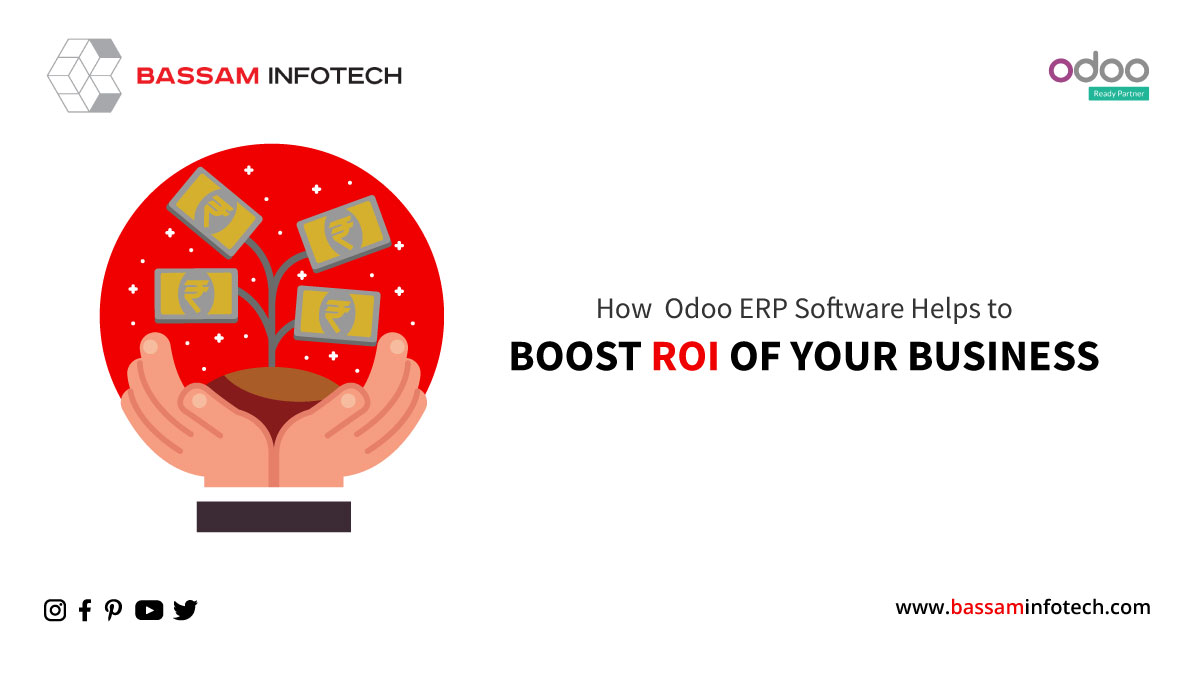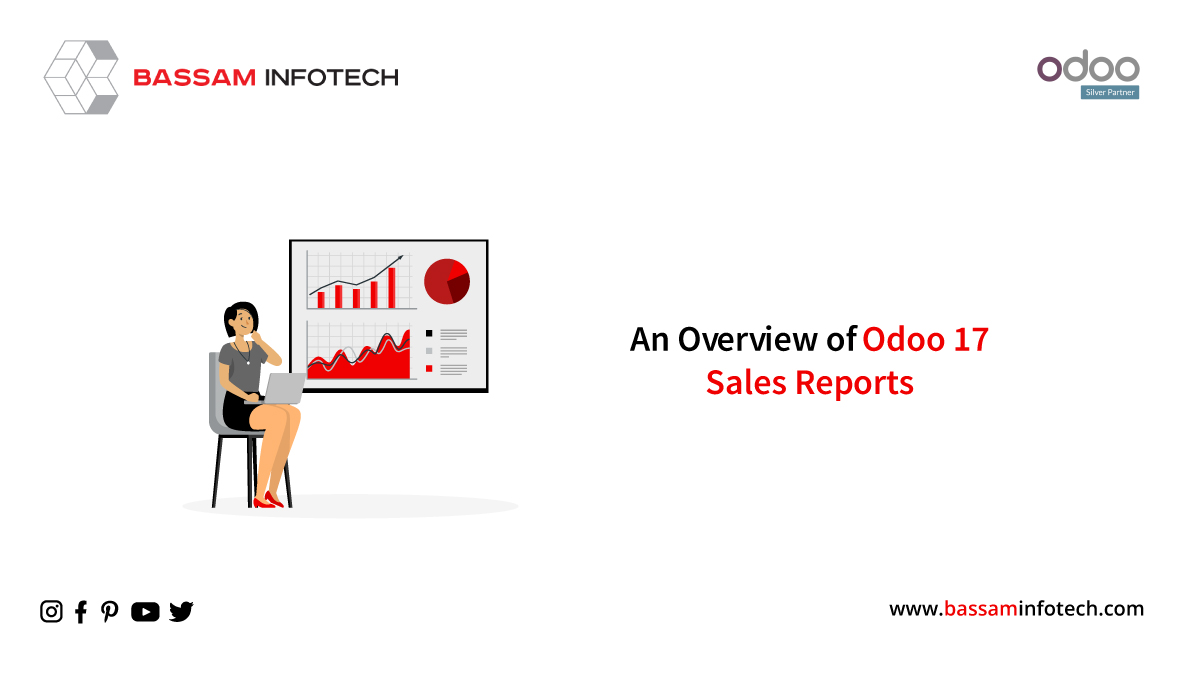How Odoo ERP Software Helps to Boost Return on investment of your Business

Introduction
For any business, an Odoo ERP Software implementation is necessary after a certain point, and implementation of any ERP system can broadly impact the business. Implementation of modern Odoo ERP Solutions helps to increase the overall business productivity and reduces operating costs. The decision to implement an Odoo ERP solution can take your Return on investment analysis of the company to the next level.
Odoo ERP System for Business Purposes
The selection of an Odoo ERP system is very crucial as it is a substantial investment in terms of time and money. Odoo ERP system is a popular open-source ERP which is an all–in–one management software with many business applications targeting companies of all sizes. The Odoo ERP can be customized and fully integrated to meet business requirements, and it supports all security technologies. Odoo is a very cost-efficient Odoo ERP solution with broader feature sets.
Return on investment (ROI) in the context of Odoo ERP System
Return on investment does not mean only financial gain. It can be the growth in productivity, efficiency, or overall improvement in the company’s performance or even better transparency in the operations which are being carried out by the organization and of course, the satisfaction of the users.
Implementing an Odoo ERP Solution has a far-ranging impact on any company or business, and many times, unexpectedly. Many of these impacts are quantifiable, but some are very difficult to measure, and that’s where the ROI ( Return Of Investment) analysis comes into the picture. Financial gains due to Odoo ERP Implementation can be achieved in the long run. But, there are many other ways of realizing an ROI and those are;
- With Streamlined processes: Existing processes are streamlined properly because of the proper flow of data across departments.
- Data Consistency: Streamlined process results in data inconsistency across the organization as it is centralized. There is no need for all the departments to store data separately.
- Increased productivity: Data consistency eliminates the burden of impertinent work from employees and managers. This helps them concentrate on their core responsibilities which results in improved productivity.
- Reduction in redundancies: Centralized database facilitates the customer order need not be stored in separate departments redundantly. One unique id will be generated for each customer or each order, which helps various departments to access the same data.
- Improved transparency: As told before, a unique id for every order helps departments to know the status of the order well in advance. This results in transparency across the organization and helps individuals process managers’ plans.
SCHEDULE A FREE LIVE DEMO – SEE HOW ODOO WORKS
How Does Odoo Help the Company to Measure Return on investment (ROI)?
Implementing the Odoo ERP system in any business/company requires a considerable investment in time and resources, which is why the estimation of ROI is crucial before selecting or implementing any Odoo ERP Solution. Justifying the budget and expenditure is a must.
Tracking, Monitoring, and Reporting can be among the most boring part of anyone’s job. But this is one of the most important functions which quantifies his/her work. Having a tool to perform these functionalities will avoid manual work, and luckily Odoo’s ERP Solution has this tool. Odoo’s Line Tracker and similar tools help to get consistent and accurate data. One can estimate the project time, budget, cost, and place that make important sense for the business.
The calculation of Return on investment (ROI) determines the cost of several project components like license, implementation, consultation, hardware, maintenance, and others. Odoo’s Return on investment Analysis is the comparison between the expected cost of all the above with the direct and indirect benefits of implementing Odoo ERP Software over a specific time period.
ERP ROI = ERP Returns/ Cost of ERP
The ROI analysis can be one of the most crucial criteria for selecting any ERP Solution. Odoo’s Return on investment (ROI) Analysis does the following, which helps customers understand why Odoo ERP is the most appropriate solution.
- Identify inefficiencies and ways to solve them
- Savings and Time Optimizations
- Comparisons between Costs and Returns
Likewise, by properly calculating the ROI, a company can choose the best choice of ERP Software that suits their business requirements. Return on investment analysis improves the success rate of Odoo ERP implementation itself because the customers will be more focused on the business values. This also helps companies to save the waste of skill and time resources.
Both tangible and intangible benefits of Odoo ERP implementation can be tracked and analyzed by following the ROI analysis methods. Insufficient planning, lack of estimation of the time, money, and resources, and the lack of a systematic approach can lead to the failure of an Odoo ERP Implementation. Odoo’s Return on investment analysis helps to plan and forecast systematically, and it also emphasizes focusing on the long-term alignment with the organization’s business process. The impacts of Odoo ERP implementation in the business need to be cross-checked, and this also can be obtained through Odoo’s Return on the investment analysis process.
The complete benefits of any ERP Implementation and Return on investment can be achieved after the Odoo ERP implementation and go-live. A good Return on investment (ROI) can be achieved only after 2-3 years of successful implementation and go-live of the Odoo ERP project too.
DOWNLOAD odoo software
We’re available by phone or email, with a 24-hour response time in case you need immediate Odoo support. For more details, Call us at +91 88912 49995 or +91 70250 75566 emails us at info@bassaminfotech.com
"Unlock the Full Potential of Your Business with Odoo ERP!"
"Get a Cost Estimate for Your ERP Project, Absolutely FREE!"
Get a Free Quote


